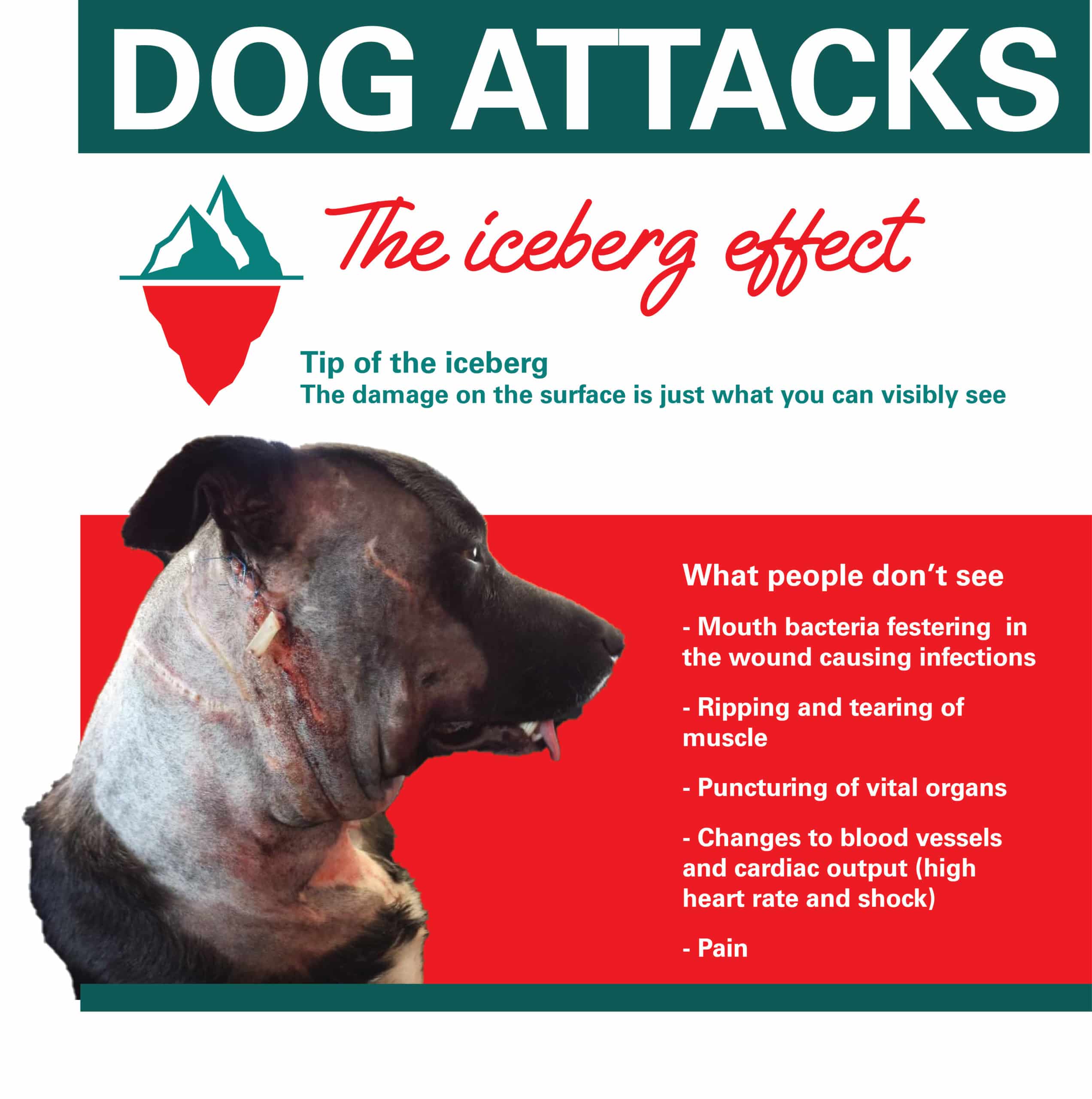It’s a scary time for any owner when their beloved dog is involved in a dog attack, and you have every reason to be worried. Unfortunately, dog attack injuries are a very regular occurrence through the hospital doors at Animal Emergency Service, and over the years we have seen a number of owners who are shocked by the damage done to their pets.
The reason for this shock is a term coined ‘the iceberg effect’ and it’s the reason our vets never underestimate the amount of damage caused underneath a dog’s skin and fur when they’ve been attacked by another dog.
The Iceberg Effect
When a dog’s jaw engages with the skin in the instance of a dog attack, multiple things happen at once:
1. Bacteria laden jaws are clamped down, puncturing the skin and injecting this bacteria into the body. There are approximately 330 varieties of bacteria that could be transferred at this stage of the dog bite.
2. A dog bite itself averages between 230-320 PSI (in comparison, a human bite averages 120-140 PSI), and the combination of the ripping and tearing action and this pressure causes significant damage both for the skin and the underlying tissues.
3. Stress reactors are released resulting in changes to the blood vessels and cardiac output – potentially sending the dog into shock.
4. Pain!
The tissue damage from the sawing and shaking actions of a dog’s jaws while they are embedded result in a large amount of tissue damage underneath and is where the term ‘the iceberg effect’ comes from. On the surface, the puncture wounds are easy to see, alongside external bleeding. This is often mixed in with fur and excess skin and may not appear to be more than scratches/bite marks.
It is what is underneath the visual wound that causes the most worry. As the skin is ripped upward, forward, and back, the subcutaneous layer is separated from the muscle, and the muscles themselves can be torn. This causes dead space, which is an ideal hiding zone for bacteria and produces what we know as infected wounds.
This is very difficult to estimate from looking at the wound externally.

Why you should always get treatment for your dog after an attack
The three biggest reasons why you should always seek veterinary attention for your dog after involvement in a dog attack are:
- Increased risk of infection
- Missed internal injuries leading to medical complications and in some cases death
- Missed significant underlying trauma and damage – symptoms aren’t always noticeable when the dog is in shock
When your pet is brought into the hospital, a vet will perform a full physical exam to check every inch of the dogs body. The vet will make an assessment of the amount of pain your pet is in and prescribe pain relief to ease their suffering, antibiotics to ward off infection, and cardiovascular support if required.
When the dog is stable enough to have an anaesthetic, the vet will then investigate the wounds and determine the extent of damage and begin to repair the wound.
In the circumstances where the jaws have penetrated into the thoracic or abdominal cavity, the dog will require extensive and complicated surgery to decontaminate the wound and to repair the damage.
If your dog has been involved in a dog attack, seek veterinary attention immediately as there is a chance that any wounds inflicted may have significant damage underneath the surface, and your dog will be in a great amount of pain that will need to be managed with medication.
We have taken great care to put together this handy guide on everything you need to know about dog attacks and how to prevent dog attacks so you can be prepared in the event of an emergency.
If your pet has been the victim of a dog attack, contact your closest Animal Emergency hospital or your local vet immediately.

